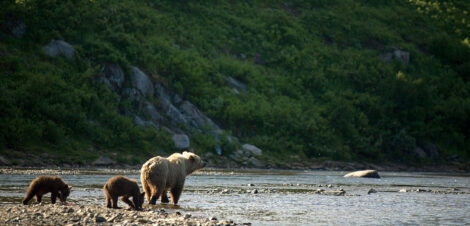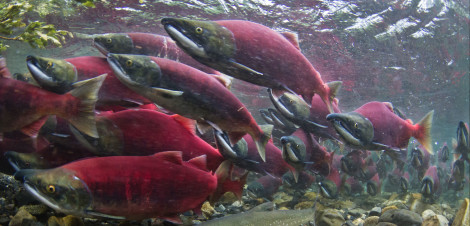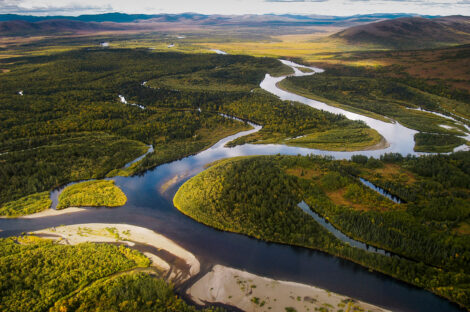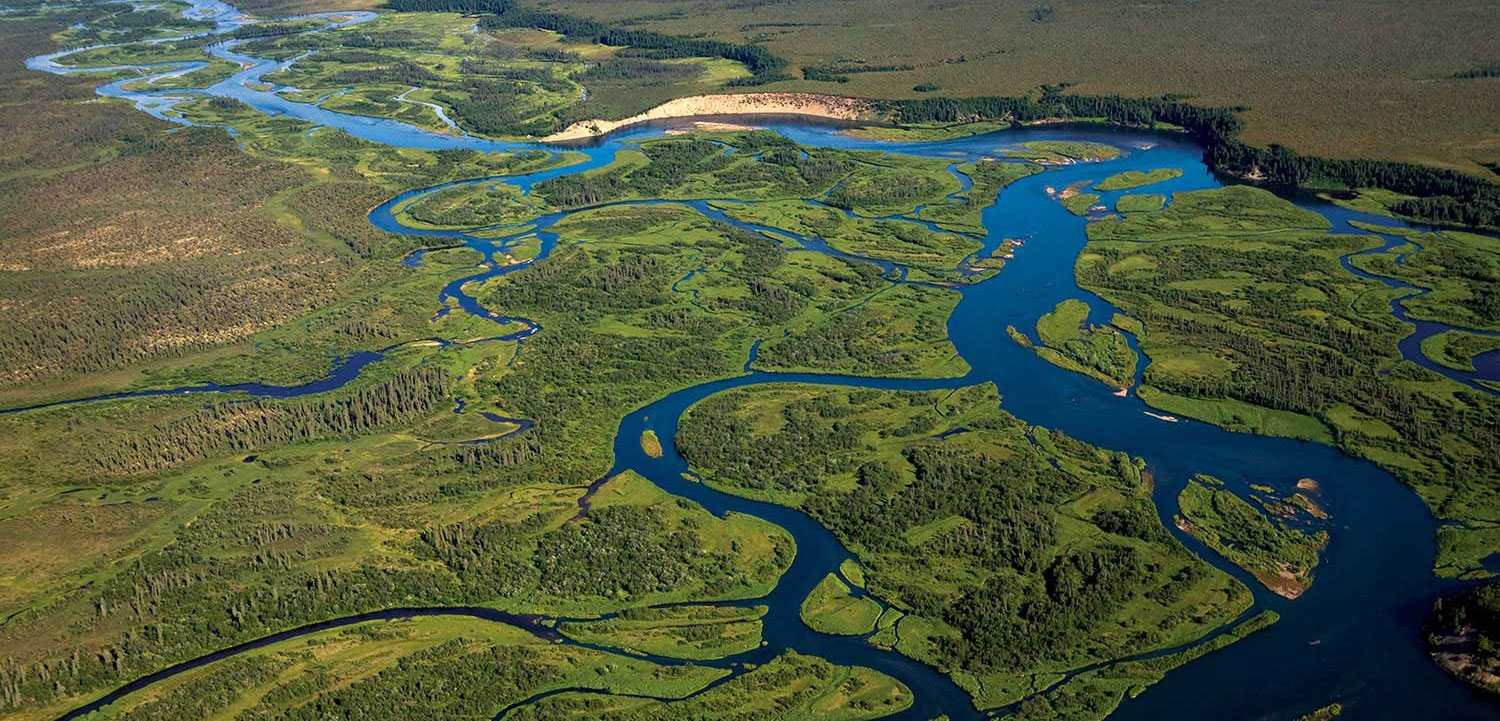New scientific report concludes Pebble Mine is a monumental gamble that risks too much.
Portland, Ore. – The proposed Pebble Mine would siphon as much as 35 billion gallons of fresh water out of the headwaters of Bristol Bay, Alaska every year, eliminating critical salmon habitat, and would likely facilitate the development of a much larger mining district, further endangering the world’s largest wild sockeye salmon fishery, according to a new, comprehensive report.

“Bristol Bay’s Wild Salmon Ecosystems and the Pebble Mine: Key Considerations for a Large-Scale Mine Proposal,” examines the potential impacts of the proposed Pebble Mine on Bristol Bay’s wild salmon fishery, which produces up to 40 million mature wild salmon each year. The 111-page report, produced by the Wild Salmon Center and Trout Unlimited, details multiple issues and concerns driven by the potential exploitation of Pebble’s massive deposit of copper, gold, and molybdenum. Examining a wide body of studies, reports, and the best available scientific information, the report analyzes preliminary proposals for the mine, concluding there is too much at stake ecologically, economically, and culturally to risk development of the Pebble deposit.
“This report shows the far-reaching impacts that development of the Pebble deposit would have on Bristol Bay’s world-class salmon fishery and largely pristine watersheds,” said Guido Rahr, President of the Wild Salmon Center. “In addition to risks posed by the chronic leaching of contaminants or a catastrophic failure, the proposed mine would substantially alter the hydrology, water table, and available habitat for salmon, which are extremely sensitive to changes in their environment.”

The report emphasizes that approval of the Pebble Mine and its infrastructure will likely lead to the development of a much larger mining district, substantially increasing the odds that mining will harm Bristol Bay’s wild salmon ecosystem. An unprecedented coalition of Alaska Native tribes and corporations, sportsmen, commercial fishermen and others have asked the EPA to protect Bristol Bay by withdrawing the watershed as a disposal site for dredge and fill activities under Section 404(c) of the Clean Water Act. The EPA is currently conducting a scientific assessment of the Bristol Bay watershed to determine whether large-scale development would adversely impact the region’s natural resources.
“This report confirms what hunters and anglers from Alaska to Maine are most worried about – Pebble Mine will damage a place that is a critical part of America’s sporting heritage,” said Shoren Brown, Alaska campaign director for Trout Unlimited. “It provides a thorough analysis of the mine’s potential impacts and makes a compelling case for why a 404(c) process is necessary to protect Bristol Bay.”
Preliminary proposals and studies presented by developers indicate that the Pebble Mine:
- Contains ore that has a high likelihood of generating acid mine drainage, which is severely harmful to salmon and other aquatic species;
- Will produce up to 10.8 billion tons of waste rock, requiring miles of tailings dams initially proposed up to 740 feet high;
- May use 35 billion gallons of fresh water per year, more than three times the usage of Anchorage, Alaska’s largest city; and
- Will construct multiple sources of contamination, including: an open pit and underground mine, an 86 mile road and pipeline route, a deep-water port and other infrastructure.

In addition, the infrastructure required to exploit the Pebble deposit has led to additional mining claims, creating a mining district which spans 793 square miles within the Bristol Bay basin, an area 10 times larger than Washington D.C. The report also presents several case studies in which mining companies polluted surrounding waters and left expensive cleanup costs to American taxpayers.
Lance Trasky, retired Alaska Department of Fish and Game Regional Supervisor and one of the report’s primary contributing authors added: “The Bristol Bay watershed and its tributary streams are a powerhouse of wild sockeye salmon production – the very best in the world. The Pebble Mine proposal dwarfs all of the existing mines put together in Alaska and, if constructed, will have devastating consequences for salmon, as well as the wildlife and humans who depend on them.
Report authors and experts are available for questions and comment. View the full copy of the report.
Contacts:
Kristin Dizon, Strategies 360, 206-631-1989; kristind@strategies360.com
David Finkel, Wild Salmon Center, 971-255-5568; dfinkel@www.wildsalmoncenter.org
